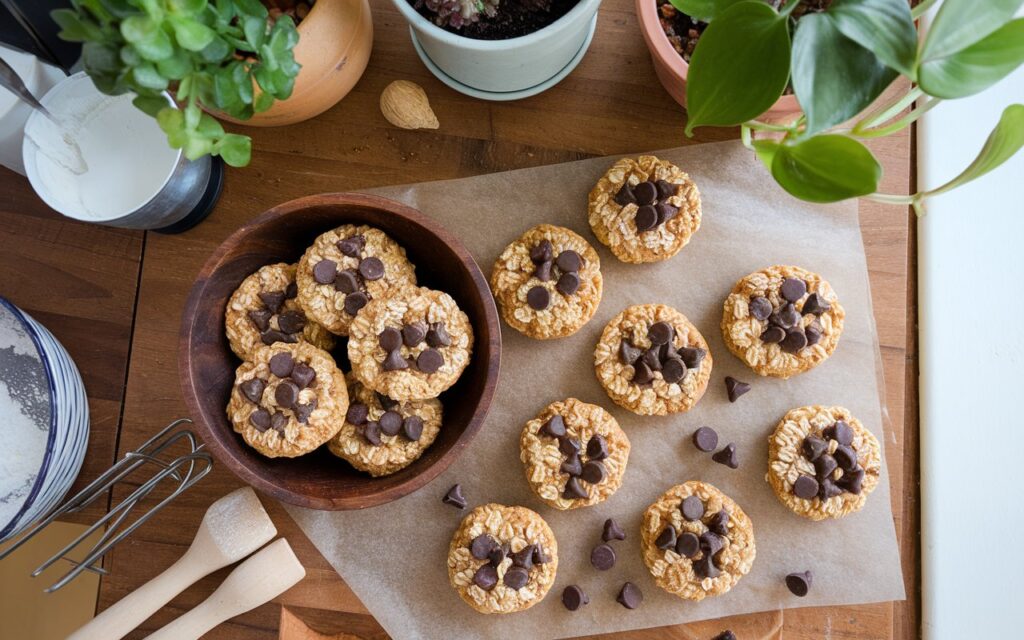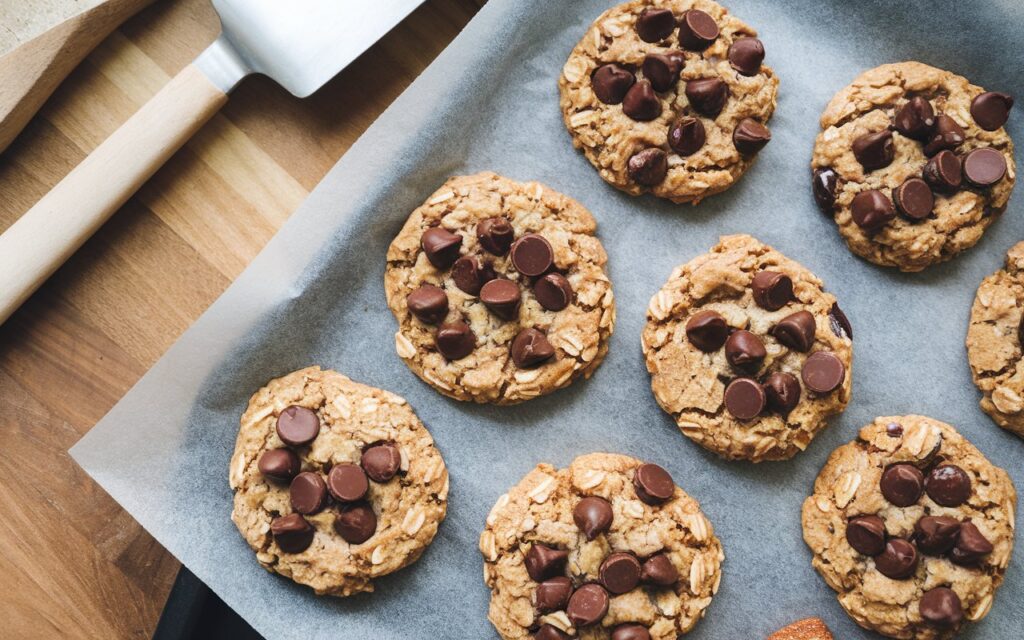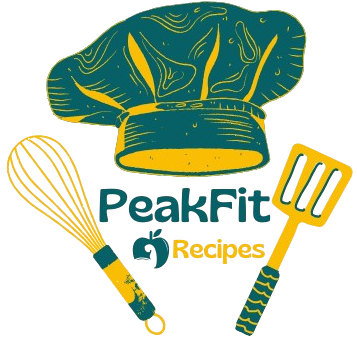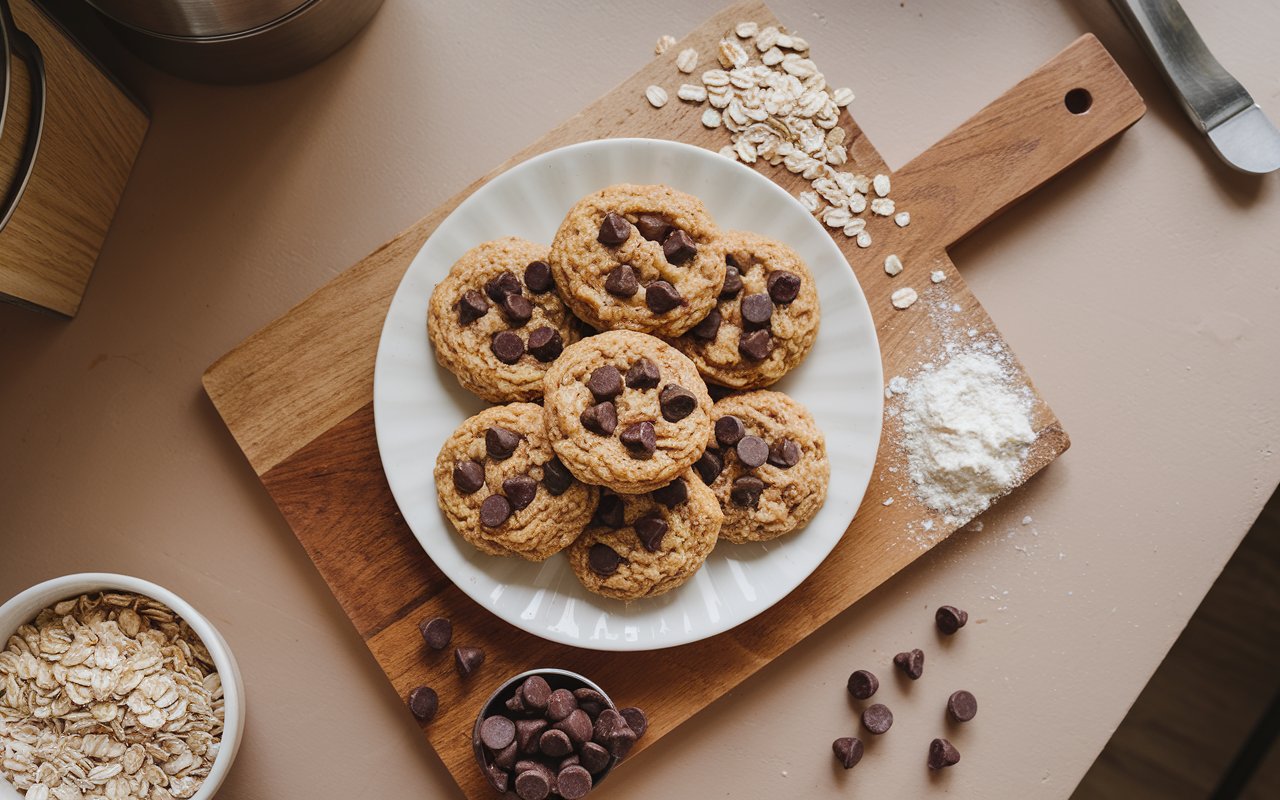When it comes to healthy snacking, nothing beats a protein cookie recipe that’s easy to make, delicious, and packed with nutrients. Whether you’re looking to refuel post-workout or curb midday cravings, these cookies are a must-try. In this guide, we’ll show you how to craft the perfect Protein Cookie Recipe while ensuring they’re as satisfying as they are nutritious.
Why You’ll Love This Protein Cookie Recipe
Healthy snacking can be a challenge, but these protein cookies strike the perfect balance between taste and nutrition. Here’s why this recipe stands out:
- Packed with protein: Ideal for fitness enthusiasts and those aiming to increase protein intake.
- Customizable ingredients: Tailor the recipe to your taste and dietary needs.
- Quick and simple: No advanced baking skills required!
Check out this article on the benefits of incorporating high-protein foods into your diet.
Ingredients for the Ultimate Protein Cookie Recipe
To make these healthy protein cookies, you’ll need simple, wholesome ingredients readily available in most kitchens. Feel free to swap out or add ingredients to suit your dietary preferences.
Core Ingredients:
- Protein Powder (2 scoops): Vanilla or chocolate works best for added flavor.
- Oats (1 cup): Old-fashioned or quick oats, ground slightly for a smoother texture.
- Almond Flour (1/2 cup): Provides a soft texture and is gluten-free.
- Peanut Butter (1/2 cup): A natural source of protein and healthy fats.
- Honey or Maple Syrup (1/3 cup): Acts as a natural sweetener.
- Egg (1 large): Helps bind the ingredients together.
- Dark Chocolate Chips (1/4 cup): Adds a touch of indulgence while keeping sugar low.
Optional Additions:
- Chia seeds or flaxseeds for added fiber.
- Dried cranberries or raisins for a hint of sweetness.
- A pinch of cinnamon or nutmeg for extra flavor.
Learn more about the health benefits of oats.
Step-by-Step Instructions
1. Prepare Your Workspace
- Preheat the oven to 350°F (175°C).
- Line a baking sheet with parchment paper or a silicone baking mat.
- Gather all ingredients and measure them accurately for the best results.
2. Mix Dry Ingredients
- In a large bowl, combine the protein powder, oats, and almond flour.
- Stir in a pinch of salt, baking powder (1 tsp), and optional spices.
3. Blend Wet Ingredients
- In a separate bowl, whisk together the peanut butter, honey, and egg until smooth.
- Gradually fold the wet ingredients into the dry mixture.
4. Incorporate Add-Ins
- Mix in the dark chocolate chips and any additional ingredients like chia seeds or cranberries.
5. Form the Cookies
- Using a spoon or cookie scoop, drop dough onto the prepared baking sheet.
- Flatten slightly with the back of a spoon for even baking.
6. Bake to Perfection
- Place the cookies in the oven and bake for 10-12 minutes.
- Allow them to cool on the baking sheet for 5 minutes before transferring to a wire rack.
Nutritional Information
Per Cookie (makes 12 servings):
- Calories: ~120
- Protein: ~7g
- Carbs: ~10g
- Fats: ~6g
Tips for Perfect Protein Cookies
- Adjust sweetness: If you prefer less sweetness, reduce the honey or maple syrup.
- Choose the right protein powder: Some powders can make the cookies dry. Whey or plant-based protein works best.
- Storage: Store cookies in an airtight container for up to 5 days or freeze for longer shelf life.
Explore tips for baking with protein powder.
The Benefits of healthy protein cookies
healthy protein cookies aren’t just delicious—they’re a powerful addition to your diet that offers a variety of health benefits. Here’s why these treats stand out as a smart choice for your snacking needs

1. High Protein Content for Muscle Support
Protein is an essential nutrient for building and repairing muscle tissue. Incorporating protein cookies into your diet is a convenient way to boost your daily protein intake. Whether you’re a fitness enthusiast, an athlete, or someone aiming to maintain lean muscle mass, these cookies provide a satisfying and portable protein source.
- Post-Workout Recovery: Consuming protein after a workout aids muscle recovery and reduces soreness.
- Sustained Energy: Protein slows digestion, helping to keep you energized throughout the day.
2. A Healthier Alternative to Regular Cookies
Traditional cookies are often high in sugar, refined flour, and unhealthy fats. healthy protein cookies, on the other hand, are typically made with nutrient-dense ingredients like almond flour, oats, and natural sweeteners. By swapping regular cookies for healthy protein cookies, you can satisfy your sweet tooth without derailing your health goals.
- Lower sugar content compared to store-bought cookies.
- Healthier fats from ingredients like nut butter or coconut oil.
- Packed with fiber from oats, helping improve digestion.
3. Convenience Without Compromise
Life is busy, and finding a healthy snack on-the-go can be challenging. Protein cookies offer a convenient, portable solution that’s easy to take anywhere. Whether you’re traveling, heading to work, or need a quick snack between meetings, these cookies are a mess-free, satisfying option.
4. Supports Weight Management Goals
Snacking on high-protein foods can help curb cravings and control hunger. Protein promotes feelings of fullness, reducing the likelihood of overeating during meals or reaching for less nutritious snacks.
- Appetite Control:healthy protein cookies help regulate hunger hormones like ghrelin, keeping you satisfied longer.
- Low-Calorie Options: When made with the right ingredients, protein cookies can be a guilt-free snack that fits into a calorie-conscious diet.
5. Nutrient-Dense Ingredients for Overall Health
Many healthy protein cookies are designed to maximize nutritional value by incorporating superfoods like chia seeds, flaxseeds, and dark chocolate. These additions provide essential vitamins, minerals, and antioxidants, which can:
- Improve heart health.
- Boost brain function.
- Strengthen the immune system.
6. Customizable to Fit Any Diet
healthy protein cookies are incredibly versatile and can be adapted to fit various dietary preferences and needs. Whether you’re following a keto, vegan, gluten-free, or low-sugar lifestyle, you can easily tweak recipes to align with your goals.
- Swap peanut butter for almond butter for a keto-friendly option.
- Use plant-based protein powder and flax eggs for a vegan version.
- Replace oats with coconut flour for a grain-free alternative.
7. A Great Option for Kids
If you struggle to get your kids to eat healthier snacks, healthy protein cookies can be a game-changer. With a delicious taste and hidden nutritional benefits, they make a great addition to lunchboxes or after-school treats. Add fun toppings like sprinkles or mini chocolate chips to make them more appealing to young eaters.
8. Reduced Sugar Cravings
The combination of protein, fiber, and healthy fats in protein cookies helps stabilize blood sugar levels. This can reduce sugar spikes and crashes, making it easier to resist unhealthy sweets and stay focused throughout the day.
Why Choose Homemade Over Store-Bought?
While store-bought protein cookies are convenient, they often contain additives, preservatives, and hidden sugars. Homemade versions allow you to control the ingredients, ensuring your cookies are both healthier and tastier.
The Science Behind Protein in Baking
Baking with protein powder introduces unique challenges and opportunities, as protein plays a vital role in the texture, structure, and overall outcome of your baked goods. Understanding how protein interacts with other ingredients can help you master recipes like healthy protein cookies while ensuring the final product is both delicious and nutritious.
1. How Protein Affects Structure
Protein is a key building block in baking because it contributes to the structure of cookies, cakes, and bread. Here’s how it works:
- When protein powder is combined with liquid, the proteins begin to bind and form a network. This network provides strength and stability to the dough.
- Overusing protein powder can lead to overly dense or dry baked goods, as it absorbs moisture more than traditional flours.
To balance this, protein powder is typically combined with flour alternatives like almond flour, oat flour, or coconut flour, which add moisture and prevent the cookies from becoming too crumbly.
2. Moisture Retention and Texture
Protein powders like whey and casein are excellent at absorbing liquid. While this is great for creating a dense and chewy texture in cookies, it can also lead to dryness if not carefully managed. To counter this:
- Add moisture-rich ingredients like nut butters, mashed bananas, or Greek yogurt.
- Honey, maple syrup, or other liquid sweeteners can also offset the dryness caused by protein powder.
3. Leavening with Protein
Unlike traditional flour, protein powder doesn’t contain gluten, which is vital for trapping air and giving baked goods their fluffiness. As a result:
- Leavening agents like baking powder or baking soda are necessary to create lightness in the cookies.
- Eggs also play a crucial role in adding structure and binding the ingredients together.
If you’re working with plant-based protein powders, which are denser than whey, you may need slightly more leavening agents to achieve the desired texture.
4. Flavor Challenges with Protein Powder
Protein powders often have a distinct taste, especially plant-based ones. Depending on the brand and type, this flavor can overpower your recipe. Here’s how to manage it:
- Use flavored protein powders (like vanilla or chocolate) to complement the recipe.
- Add spices like cinnamon or nutmeg to mask any bitterness.
- Pair protein powder with strong flavors such as cocoa, peanut butter, or dark chocolate.
5. Choosing the Right Protein Powder
Not all protein powders are created equal, and their properties can significantly affect the outcome of your cookies:
- Whey Protein: Lightweight and blends well, making it ideal for soft and chewy cookies.
- Casein Protein: Absorbs more liquid and results in denser baked goods.
- Plant-Based Protein: Thicker and grainier but suitable for vegan or gluten-free recipes.
Each type of protein powder has unique binding properties, so experiment with small batches to see which works best for your recipe.
6. The Role of Heat in Baking with Protein
Proteins denature, or change structure, when exposed to heat. This process is critical in baking because:
- Heat solidifies the protein network, creating structure.
- However, excessive heat or overbaking can cause the protein to tighten too much, leading to dry or rubbery textures.
- To avoid this, bake protein cookies at a moderate temperature (around 350°F) and keep an eye on them during the process.
7. Benefits of Baking with Protein
Despite the challenges, incorporating protein into baking offers several advantages:
- Increases the nutritional value of baked goods, especially for fitness enthusiasts.
- Helps with satiety, keeping you fuller for longer.
- Offers flexibility to create low-carb, high-protein alternatives to traditional treats.

FAQs About Protein Cookies
Are protein cookies actually healthy?
Yes, they can be a healthier alternative to traditional cookies when made with nutrient-dense ingredients like oats, almond flour, and natural sweeteners.
Can I use protein powder instead of flour for cookies?
Partially. Protein powder can replace some flour, but combining it with almond flour or oats ensures a better texture.
Do healthy protein cookies fill you up?
Absolutely! The combination of protein, healthy fats, and fiber keeps you feeling full longer.
What is the healthiest type of cookie?
healthy protein cookies made with natural ingredients, minimal sugar, and nutrient-rich additions like chia seeds are among the healthiest options.

